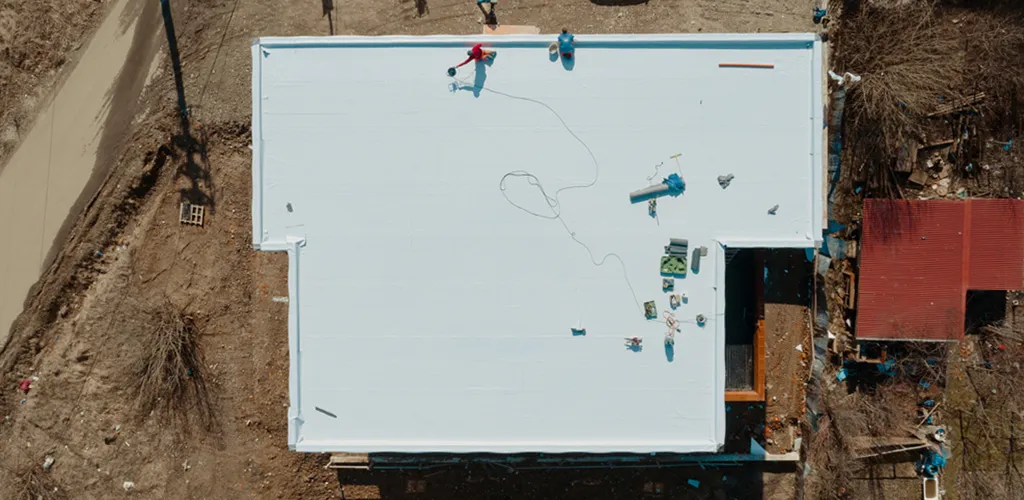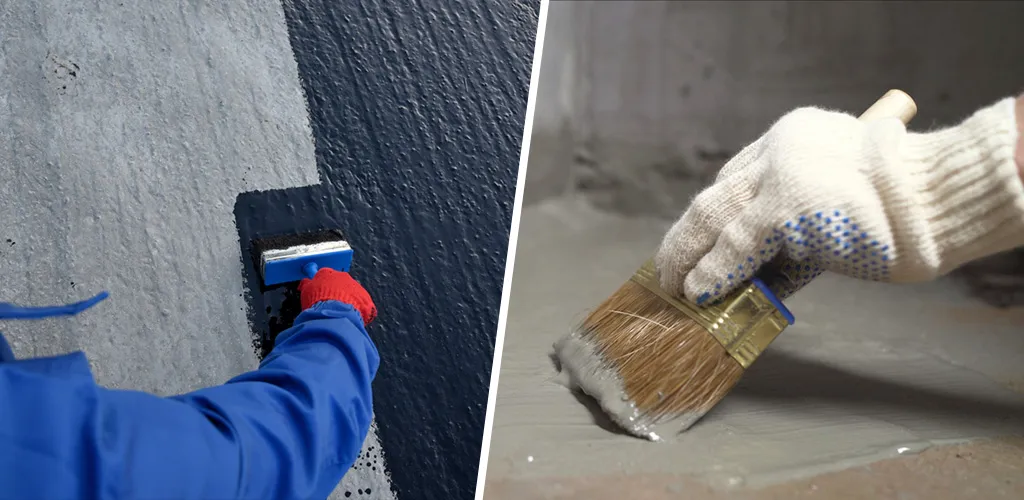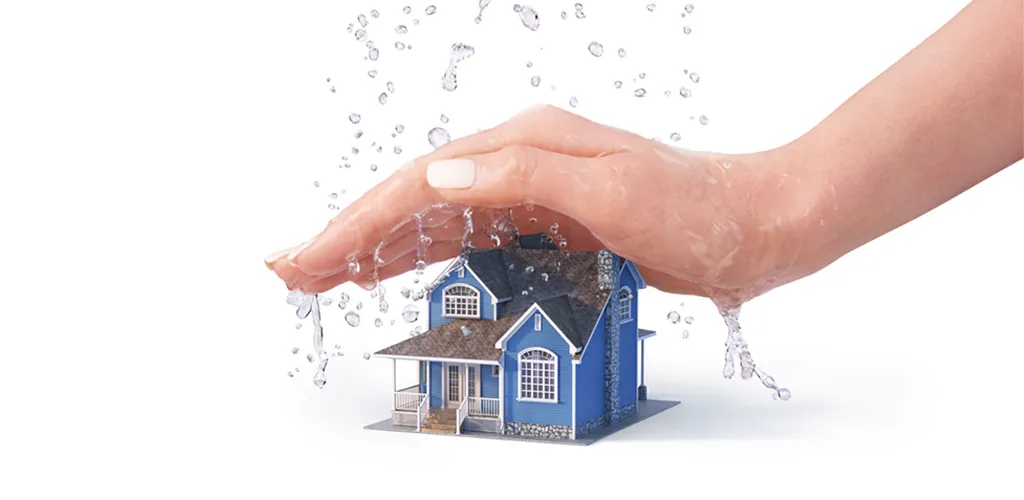Roof Waterproofing is a critical component of construction, particularly for high-rise buildings. In reality, structural stability is partially dependent on proper waterproofing treatment. If not done correctly, the structure is vulnerable to water damage, posing a risk to the property and the health and safety of people who live inside.
Following suitable waterproofing measures can assist you in avoiding potential threats and saving your home from water damage. Waterproofing your balcony or roof is required across Pakistan. These measures especially become crucial for multi-level houses or companies with numerous floors and occupants. This is because multi-level stories allow water damage, which is, of course, costly and unsafe for residents or workers.
What is Waterproofing?

Waterproofing is the process of making a structure water-resistant or impenetrable to water infiltration in building construction. Waterproofing is necessary because it saves invading structures and keeps interior spaces dry. It aids in lowering humidity inside the building, hence preventing damage to furniture and other items.
Waterproofing is essential in locations with heavy yearly rainfall and occasional flooding occurrences. Basements and foundations must be watertight, especially in locations where the groundwater table is high. Water in the soil is likely to impose hydrostatic pressure on the basement floor and walls in the case of a high water table. This can drive water into fractures, causing structural damage and moisture-related issues, including mould, mildew, and rot.
During the monsoon season, we have all experienced water seepage in the ceilings and walls, as well as dampness in the aftermath of flooding. This is due to inadequate waterproofing. Waterproofing your home protects both the structure and the contents from damage caused by humidity and water exposure.

Types of Waterproofing
1. Cementitious waterproofing material
Cementitious waterproofing is the simplest type of building waterproofing. Materials for cementitious waterproofing are available from various vendors such as Ressichem. They are also simple to combine and apply. The cementitious waterproofing method is applicable in damp places such as toilets.
2. Membrane Liquid, A waterproofing material
A priming coat (in Some Cases) and two topcoats make up the liquid membrane. Sprayer, roller, or trowel incorporate these coatings. The liquid coating is thinner and more flexible than cementitious waterproofing methods. The liquid hardens and hardens into a resilient layer on the wall.
The coat’s elongation characteristics can reach up to 280 per cent. The type of polymer used by the manufacturer determines the longevity of the waterproofing coating.
3. Waterproofing chemical using Bituminous Coating
Bituminous coating have components derived from bitumen. Based on its formulation and polymerization grade, it is a flexible protective coat.
The polymer grade and fibre reinforcement can have an impact on flexibility and water resistance. Wet regions beneath screeds are the most prevalent use for bituminous coatings. It is an excellent protective coating and waterproofing agent, particularly for concrete foundations. Bituminous coatings are well suited for construction applications which are below ground and berried, with extensive UV and sunlight exposure, it is recommended to use a liquid membrane coating. It is worth noting that for specific areas and nature of applications, specific waterproofing materials are used and recommended.
4. Waterproofing using a Bituminous Membrane
Because of its established efficacy, bituminous membrane waterproofing is an ordinary option for low-sloped roofs. The self-adhesive bituminous waterproofing membrane features a torch on the layer.
Asphalt, polymers, and filler are standard components of self-adhesive compounds; other resins and oils boost adhesion properties. The self-adhesive kind has a short shelf life because the bonding characteristics of the membrane deteriorate with time. The bituminous membrane is also a well suited material for below ground applications where the membrane is not exposed.
5. Waterproofing using Polyurethane Liquid Membrane
The polyurethane liquid membrane utilises flat roof areas subjected to deterioration. This form of waterproofing is costly.
Polyurethane Liquid Membrane may provide greater flexibility. Polyurethane is extremely sensitive to moisture levels. As a result, before application, we must evaluate the moisture content of the concrete slab; otherwise, peeling or de-bonding of membranes may occur after some time.
What is roof waterproofing?
Roof waterproofing is an additional layer of protection placed on your roof to ensure that no water enters your property or begins to destroy the walls or support beams. Roof leaks include considerable factors, the most common of which is poor roof waterproofing. The basic reasons when you need roof waterproofing in Pakistan.
- Damage to the roof structure such as continuous dampness, mold formation, or roof collapse in your area.
- Water Stains On your building’s ceilings and walls.
- When you have to deal with mossy and moldy exterior walls

Uses of Roof Waterproofing
- Waterproofing is a critical component in creating a building envelope, which is a controlled environment, in the construction industry.
- The walls do not expose standing water, and the water-resistant membranes used as house wraps are permeable enough to allow moisture to escape.
- Tanking is a type of waterproofing utilized in situations where the belowground structure will interact with the water table on a constant or periodic basis.
- Damp proofing employs a water table lower than the building and the fill is well-drained. With no hydrostatic pressure, the membrane merely deals with the shedding of water and the intrusion of water vapor.
- Rooftop decks and balconies are other specialized areas of waterproofing.

Advantages of Roof Waterproofing
The following are some of the most important advantages of roof waterproofing.
1. Increases the structure's durability
Moisture eats away at the strength of your construction if we lack in handling our building structures. Investing in an excellent roof waterproofing solution can extend its life.
2. Repairs are less expensive.
Roof waterproofing helps save money in the long run by lowering the expense of regular repairs.
3. Provides Energy Efficiency
Waterproofing treatments not only cure leaking roofs but some materials also provide excellent insulation. It is UV resistant and decreases the temperature by 4 degrees Celsius (Minimum). Consequently, it saves you money on utility bills by lowering your air conditioning expenditures.
4. Prevents the Development of Health Issues
Water seepage through the roof reaches various portions of your structure that cause and grow mould and mildew. As a result, the residential spaces may have dangerous health issues, including wheezing, eye infection, breathing problems, coughing, and skin irritation, to mention a few. Having your roof waterproofed can help you avoid the start of the aforementioned health issues.
5. Enhances the Life of Interior Design and Furniture
When water penetrates your walls, mould and mildew growth, gradually destroying the beauty of your interiors if left untreated. Waterproofing your roof may extend the life of your interior design and furniture.
Summary
Urban building frequently includes reinforced steel inside its skeleton, making it resistant to weather, high winds, severe heat, and even moderate seismic jolts. Waterproofing chemical is effective on roofs and foundations of various structures. It has the ability to be waterproof and safeguard structures.
Roof waterproofing is an important method that can withstand rainfall or any other type of water pour without leaking into its composition when you acquire the right roof waterproofing Services Company.

